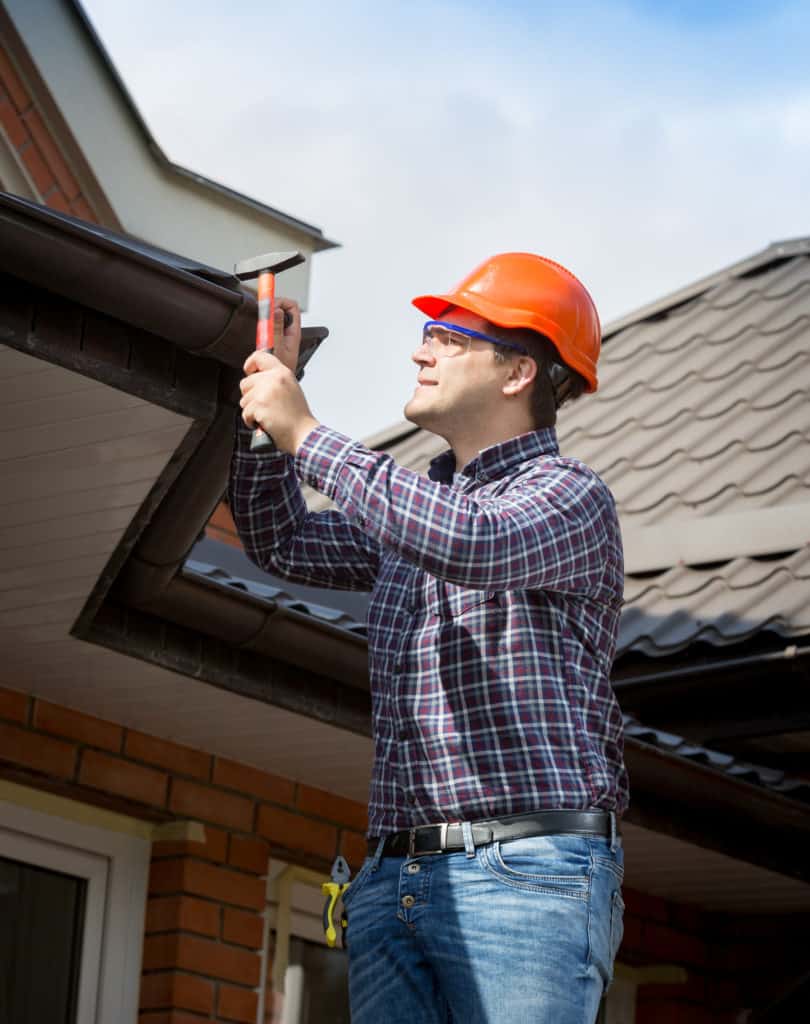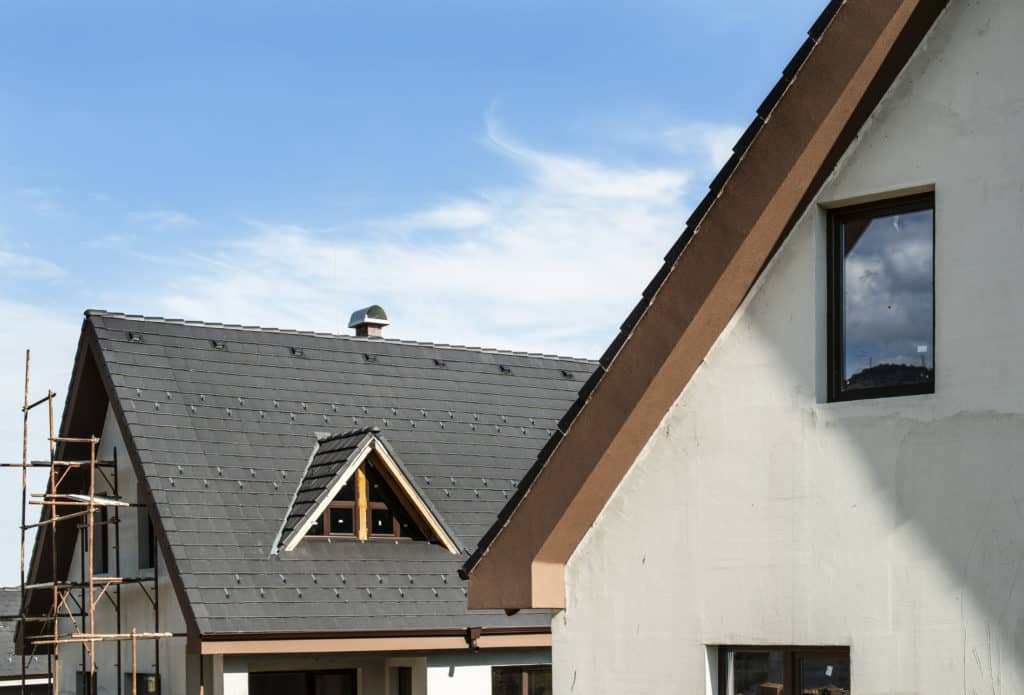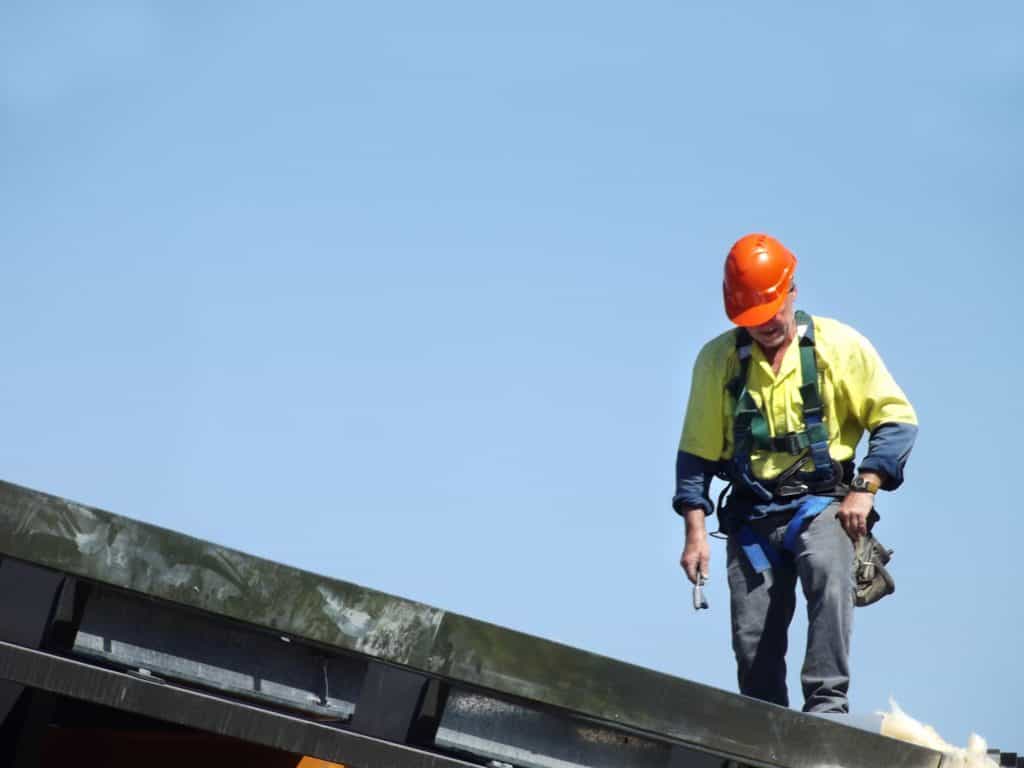If you’re a homeowner looking to save money on home maintenance, several DIY Roof Maintenance Tips For Homeowners can help you protect your roof and save money. Inspect your roof after a storm. Look for loose or missing shingles, as well as ice dams. You can use calcium chloride to melt ice dams.

Inspect your roof after a storm.
If you’ve recently had a storm and your roof is damaged, there are a few things you can do to keep it in good condition. First, inspect your roof from the outside. Look for damage, especially in areas near your chimney and vents. If there are any holes or spots where water can seep in, take action immediately to prevent more expensive repairs down the road. Also, inspect your roof for rust.
Water-damaged areas can also cause mold, wood rot, and leaks. Look for yellow, copper, and brown discoloration if your roof was damaged during a storm. You can also look for cracks or bubbles in the paint or wallpaper. You may even notice a musty odor. Additionally, check the exterior of your home for broken tree limbs or hail damage.
Inspect your roof after a storm for apparent damage, such as cracked or loose shingles. If there are areas where shingles have fallen off, fix them as soon as possible. Also, check the gutters and downspouts to ensure they are working correctly and do not have leaks. You’ll need to call a professional if there are any signs of water penetration under the roof.
Hailstorms usually last only a short period, but these storms can still damage your roof. Hailstones can dent or knock shingles loose, leaving them vulnerable to the sun and rain. They can also ruin the look of your roof. Big rainstorms can also cause standing water. If your gutters are clogged, rainwater can back up under shingles, leaving them susceptible to moisture intrusion.

Check for missing or loose shingles.
When you do DIY roof maintenance, look for loose or missing shingles. These can result in water damage and rot on the underside. A pry bar can help you loosen loose or missing shingles and nail them down securely. Regular touch-ups will also help prolong the life of your roof.
When you do DIY roof maintenance, you should also look for granules that have fallen off the shingles. These are tiny pieces of debris that can lead to a roof leak. These particles look like coarse black sand. They can also cause stains on the interior walls of your home. If you notice any of these signs, it’s time to call a professional or start addressing the issue yourself.
Among the common problems with a roof, missing or loose shingles is one of the most common. This issue is often caused by wind damage. Sometimes, a homeowner can repair loose shingles by replacing them. If the loose shingles are causing water damage, consider hiring a professional to do the job.
A leaky roof will result in stains in the home. Also, loose shingles, loose flashing, or loose hardware can lead to water damage or mold. You can also check for leaks by inspecting the ceiling and attic of the home.

Inspect your gutters
If your gutters are collecting debris, it may be time to clean them. Clogged gutters can cause a significant amount of damage. You can prevent this problem by inspecting your gutters regularly. When you clean your gutters, remember to wear safety gloves and use a wire brush. Then, rinse the area with water. Afterward, inspect your gutters for leaks. If you find leaks, you can patch them with caulk, which you can purchase from local hardware stores. Also, keep an eye on your gutters for loose gutter frames.
A simple inspection of your gutters can save you money and prevent damage. Check them for cracks or rust; if necessary, use caulk or sealant to repair them. However, if they are rusted or cracked, you should seek professional help. Besides inspecting your gutters regularly, you can also take steps to protect your home by trimming trees near your home. This will prevent tree limbs from falling and damaging your property during severe storms.
It is vital to clean gutters regularly, especially after a heavy rainstorm, to prevent clogging and severe water damage. A clogged gutter can also cause damage to your roof. Luckily, most homeowners can handle this task. Clean gutters once or twice a year and inspect them after storms to check for signs of damage.
Check for ice dams
Ice dams can be a severe problem for a roof. These dams form when snow and another precipitation form on the roof. The snow acts as a natural insulator, trapping heat and causing it to flow down the roof. It freezes when it reaches the warm part of the roof, typically the last section. This causes a buildup of ice, which can negatively affect the home’s interior.
Ice dams are not always noticeable, but the problem could cause severe damage to a roof. A roofer can inspect your roof to find the source of the problem. Inadequate attic insulation is the most common culprit. This allows warm air to escape and freeze upward, causing roof snow to move down the roof quickly. The solution is to apply preventative measures during warmer weather.
The first step is to remove the snow from the roof. This involves scraping off any excess snow and ice. Another step is to melt any ice dams formed by snow accumulation. You can use a rake or heated cable to clear a path between the ice structures. However, it’s essential not to use a sharp tool to remove ice dams. Sharp tools can damage the roof.
Using a roof rake to remove snow from the roof’s edge can help prevent ice dams from forming. Use a rake that won’t damage the roof or walkway. Then, use calcium chloride ice melt to melt any ice dams.
Check for leaking caulk.
A variety of issues, including faulty caulk, cause leaky roofs. The best way to detect and repair these problems is to inspect the entire roof, not just the damaged portions. Check the caulk and replace it if necessary. Make sure to follow industry best practices when caulking. Call a professional if you need more confidence in performing the task.
Flashing is another common source of leaks. It protects the areas where two roof surfaces meet, and in poor condition, it can leak. Check for any cracks or splits in the flashing, which can allow water to leak into the house. Likewise, make sure the caulk is in good shape, with a solid bead. If the bead is missing or broken, the leak can worsen.
Another common area for leaking roofs is around vent edges and skylights. If the caulk is deteriorated and leaking, water will seep into the attic. Finding where the leak is coming from may be challenging, so be prepared to call in a professional.
If a leak is hard to identify, a roofer can pinpoint the exact spot by examining the flow lines in the attic. If a leak is small, it may be temporary and can be repaired easily. A leak in the attic will damage the ceiling and walls. If left unrepaired, it may also lead to mold growth.
Check for leaks in your attic.
One of the first things you should do when doing DIY roof maintenance is to check for leaks in your attic. If you have an attic, entering it through a ladder and using a flashlight to look for wet spots in the rafters and sheathing is best. It would be best to look for dark mold and rotted wood around the leak’s location. You can also check the insulation batts of your rafter bays for wet spots.
Another sign of a leaky roof is a water stain on the ceiling. This can happen suddenly or slowly over time. If you notice that the stain is on the ceiling, water may have penetrated the flashings and beams of the roof and reached the insulation.
Another sign of a leaky roof is a sagging roof. This can be a sign of a leaking roof or improper ventilation. The dampness can cause the attic floor to sag or become moldy. If you need help determining the source of the leak, contact a roofing professional and have them inspect the problem.
A leaky roof can also cause stains on the inside of your home. If you can’t get into the attic, use a bucket to catch the water. Be sure to move slowly from spot to spot and take your time. Inspect each area for signs of water. Try tearing off a few shingles and looking underneath if you find any. Water stains and rotting wood are often signs of leaks.



